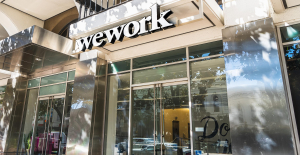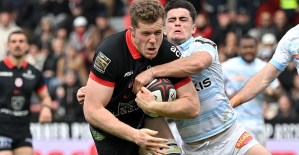Sometimes you have to stop to gain strength and continue faster. It is something common in sports, but not only on the track. This is also the case at the corporate level, where the race to sponsor the athlete who crowns the podium never stops.
Under Armor knows it well. "There was a time when we felt our athletes were at a disadvantage because of their footwear... a time when we lost some of the greats, who went to dress other brands," recalls Doug Smiley, global director from the line of performance running shoes. "We didn't have products to be competitive," he admits. After the stop, the motivation came to reinforce themselves: "We had to make a promise to those who stayed that we would commit to them with competitive footwear that would give them an essential advantage on race day." And then came the acceleration, which Smiley defines with five words: "Our purpose is to make athletes."
This is how this story arose, which reflects the technological career of sports manufacturers and which at Under Armor is called Flow Velocity Elite. Under this name there is not just a pair of sneakers. Behind it is the run of the brand, which has gone from that disadvantage in the competitive (and increasingly disputed) world of running to launch its first shoe with a carbon plate to stand up to its main competitors in the market. "We're late to this game," Smiley admits to his star model. "I'll be the first to admit it, but right now we couldn't be more excited."
About his success, he puts on the table the prototype that Sharon Lokedi wore when crossing the finish line in the New York marathon last year. To get there, the brand did a lot of research, thus fulfilling its DNA, which genetically incorporates the American dream of the professional athlete who questions how to improve sports performance through technology.
Under Armor started from scratch, with a full-blown journey to the center of the shoe. He assembled and disassembled soles and insoles and then reassembled and dismantled them to create prototypes.
He solicited ideas from as many athletes as he could to come up with a shoe that would work for a wide variety of runners. "We know that other brands manufacture to try to break records based on the ideas of a single athlete," the manager qualifies in a wink at his rivals. Because it is not just about placing a carbon plate, which by itself does not provide speed, but a range of technologies that make a difference in the eyes of asphalt specialists. "We set key goals that our shoes should have. Of course, the first was propulsive effect to feel the sensation underfoot and move forward," he stresses. "That was key to getting everyone talking about the explosive effect of the shoe to move faster."
Logically, it has not arrived here overnight. "Things have changed a lot in the last ten years," concludes Smiley. A decade ago, when he worked at Mizuno, the goal of brands was to make the lightest shoe of all time. But around 2016-2017, the "landscape changed drastically" and they moved towards a balance between low weight and cushioning. "It's a huge transformation in the way technology has influenced footwear and running in general."
It is what Under Armor has implanted. It is the wake of Kevin Plan, its founder in 1996. It was in a garage in Baltimore with an investment of $500. In one year, it entered $17,000 to bill 5.7 billion annually today, according to the latest data from 2021, when it left the pandemic behind to enter 27% more than the previous year. By segment, clothing sales grew 33.3% (up to 3.4 billion), while footwear sales rose 35.3%, up to 1.1 billion, a figure in which Under Armor now seeks to sprint with this story of overcoming .

 What is chloropicrin, the chemical agent that Washington accuses Moscow of using in Ukraine?
What is chloropicrin, the chemical agent that Washington accuses Moscow of using in Ukraine? Poland, big winner of European enlargement
Poland, big winner of European enlargement In Israel, step-by-step negotiations for a ceasefire in the Gaza Strip
In Israel, step-by-step negotiations for a ceasefire in the Gaza Strip BBVA ADRs fall almost 2% on Wall Street
BBVA ADRs fall almost 2% on Wall Street Children born thanks to PMA do not have more cancers than others
Children born thanks to PMA do not have more cancers than others Breast cancer: less than one in two French women follow screening recommendations
Breast cancer: less than one in two French women follow screening recommendations “Dazzling” symptoms, 5,000 deaths per year, non-existent vaccine... What is Lassa fever, a case of which has been identified in Île-de-France?
“Dazzling” symptoms, 5,000 deaths per year, non-existent vaccine... What is Lassa fever, a case of which has been identified in Île-de-France? Sánchez cancels his agenda and considers resigning: "I need to stop and reflect"
Sánchez cancels his agenda and considers resigning: "I need to stop and reflect" “Amazon product tester”: the gendarmerie warns of this new kind of scam
“Amazon product tester”: the gendarmerie warns of this new kind of scam “Unjustified allegations”, “promotion of illicit products”… Half of the influencers controlled in 2023 caught by fraud repression
“Unjustified allegations”, “promotion of illicit products”… Half of the influencers controlled in 2023 caught by fraud repression Extension of the RER E: Gabriel Attal welcomes a “popular” ecology project
Extension of the RER E: Gabriel Attal welcomes a “popular” ecology project WeWork will close 8 of its 20 shared offices in France
WeWork will close 8 of its 20 shared offices in France “We were robbed of this dignity”: Paul Auster’s wife denounces the betrayal of a family friend
“We were robbed of this dignity”: Paul Auster’s wife denounces the betrayal of a family friend A masterclass for parents to fill in their gaps before Taylor Swift concerts
A masterclass for parents to fill in their gaps before Taylor Swift concerts Jean Reno publishes his first novel Emma on May 16
Jean Reno publishes his first novel Emma on May 16 Cannes Film Festival: Meryl Streep awarded an honorary Palme d’Or
Cannes Film Festival: Meryl Streep awarded an honorary Palme d’Or Omoda 7, another Chinese car that could be manufactured in Spain
Omoda 7, another Chinese car that could be manufactured in Spain BYD chooses CA Auto Bank as financial partner in Spain
BYD chooses CA Auto Bank as financial partner in Spain Tesla and Baidu sign key agreement to boost development of autonomous driving
Tesla and Baidu sign key agreement to boost development of autonomous driving Skoda Kodiaq 2024: a 'beast' plug-in hybrid SUV
Skoda Kodiaq 2024: a 'beast' plug-in hybrid SUV The home mortgage firm rises 3.8% in February and the average interest moderates to 3.33%
The home mortgage firm rises 3.8% in February and the average interest moderates to 3.33% This is how housing prices have changed in Spain in the last decade
This is how housing prices have changed in Spain in the last decade The home mortgage firm drops 10% in January and interest soars to 3.46%
The home mortgage firm drops 10% in January and interest soars to 3.46% The jewel of the Rocío de Nagüeles urbanization: a dream villa in Marbella
The jewel of the Rocío de Nagüeles urbanization: a dream villa in Marbella Europeans: a senior official on the National Rally list
Europeans: a senior official on the National Rally list Blockade of Sciences Po: the right denounces a “drift”, the government charges the rebels
Blockade of Sciences Po: the right denounces a “drift”, the government charges the rebels Even on a mission for NATO, the Charles-de-Gaulle remains under French control, Lecornu responds to Mélenchon
Even on a mission for NATO, the Charles-de-Gaulle remains under French control, Lecornu responds to Mélenchon “Deadly Europe”, “economic decline”, immigration… What to remember from Emmanuel Macron’s speech at the Sorbonne
“Deadly Europe”, “economic decline”, immigration… What to remember from Emmanuel Macron’s speech at the Sorbonne These French cities that will boycott the World Cup in Qatar
These French cities that will boycott the World Cup in Qatar Champions Cup: Toulouse with Flament and Kinghorn against Harlequins, Ramos replacing
Champions Cup: Toulouse with Flament and Kinghorn against Harlequins, Ramos replacing Tennis: still injured in the arm, Alcaraz withdraws from the Masters 1000 in Rome
Tennis: still injured in the arm, Alcaraz withdraws from the Masters 1000 in Rome Sailing: “Like a house that threatens to collapse”, Clarisse Crémer exhausted and in tears aboard her damaged boat
Sailing: “Like a house that threatens to collapse”, Clarisse Crémer exhausted and in tears aboard her damaged boat NBA: Patrick Beverley loses his temper and throws balls at Pacers fans
NBA: Patrick Beverley loses his temper and throws balls at Pacers fans


















